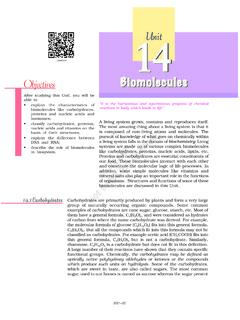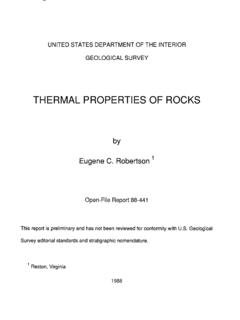Transcription of What is VVM and how does it work - World Health …
1 What is VVM and how does it work Page 1 photo: umit kartoglu, bandung, indonesia What is VVM and how does it work? A vaccine vial monitor (VVM) is a label containing a heat-sensitive material which is placed on a vaccine vial to register cumulative heat exposure over time. The combined effects of time and temperature cause the inner square of the VVM to darken, gradually and irreversibly. A direct relationship exists between the rate of colour change and temperature: The lower the temperature, the slower the colour change. The higher the temperature, the faster the colour change. The VVM is a circle with a small square inside it. It can be printed on a product label, attached to the cap of a vaccine vial or tube, or attached to the neck of an ampoule. Vaccine Vial Monitor (showing no heat exposure) The inner square of the VVM is made of heat sensitive material that is light at the starting point and becomes darker with exposure to heat.
2 At the starting point, the inner square is a lighter colour than the outer circle. From then on, until the temperature and/or duration of heat reaches a level known to degrade the vaccine beyond acceptable limits, the inner square remains lighter than the outer circle. At the discard point, the inner square is the same colour as the outer circle. This reflects that the vial has been exposed to an unacceptable level of heat and the vaccine degraded beyond acceptable limits. The inner square will continue to darken with heat exposure until it is much darker than the outer circle. Whenever the inner square matches or is darker than the outer circle, the vial must be discarded. VVMs are located either on the label or on the top of the cap or on the neck of the ampoule depending on the type of vaccine (liquid or freeze-dried). VVM for liquid type vaccines are placed on custom labels to allow reference to VVM readings even though those vials have VVM is the only tool among all time temperature indicators that is available at any time in the process of distribution and at the time a vaccine is administered indicating whether the vaccine has been exposed to a combination of excessive heat over time and whether it is likely to have been damaged.
3 It clearly indicates to Health workers whether a vaccine can be used. What is VVM and how does it work Page 2 been opened and intended to be used in subsequent sessions according to multi-dose vial policy (MDVP). VVM for freeze dried vaccines are placed either on top of the cap (vials) or on the neck of the ampoule so it is discarded by the time of reconstitution. Since freeze-dried vaccines must be discarded within six hours or at the end of the session whichever comes first, VVM can only be referred until the time of reconstitution. The point to focus on is the colour of the inner square relative to the colour of the outer circle: Rule 1: If the inner square is lighter than the outer circle, the vaccine may be used. Rule 2: If the inner square is the same colour as, or darker than, the outer circle, the vaccine must not be used.
4 There are four different types of VVMs designed for different types of vaccines depending on their heat stability. Reaction rates are specific to four different models of VVM, relating to four groups of vaccines according to their heat stability at two specific temperature points. Table. VVM reaction rates by category of heat stability Category (Vaccines) No. of days to end point at +37 C No. of days to end point at +25 C Time to end point at +5 C VVM 30: High Stability 30 193 > 4 years VVM 14: Medium Stability 14 90 > 3 years VVM 7: Moderate Stability 7 45 > 2 years VVM 2: Least Stable 2 N/A* 225 days *VVM (Arrhenius) reaction rates determined at two temperature points The below figure explains the interpretation of VVM. VVM colour change is a continuous process. The combined effects of time and temperature cause the inner square (active surface) of the VVM to darken gradually and irreversibly.
5 The What is VVM and how does it work Page 3 rate of colour change increases with temperature. The inner square is initially lighter in colour than the outer circle (but the inner square is never white). It remains so until the temperature and/or the duration of heat reaches a level that is likely to degrade the vaccine beyond the acceptable limit. The inner square continues to darken as heat exposure continues, until it is much darker than the outer circle. If the inner square becomes as dark as or darker than the outer circle the vial must be discarded. Therefore the whole interpretation of whether to use the vaccine depends on whether the inner square is lighter than the outer circle. Since VVM colour change is a continuous process, all stages that are referred to are fully arbitrary. In reality, there are millions of hues between the start point of the inner square and the discard point.
6 Since this issue is still coming up as enquiry, it seems that we have to develop a new approach in explaining this colour change and start not to refer to any stages at all. The current PQS vaccine vial monitor product specification (WHO/PQS/E06 dated 30 November 2006) defines only two stages in VVM colour: start point and end point. At the start point, the colour density of the square as measured by an Xrite Model 404 GS or GSX colour reflection densitometer, is lighter than the colour shade of the circle by a difference of at least OD densitometer units. The end point is reached when the difference in the average colour density obtained from readings at least two different points on the circle and the colour density of the square is OD, as measured by the densitometer. The end point is exceeded when the colour of the square is darker than the colour of the circle.
7 The VVM inner square start point colour is approximately 10% of the outer circle colour. With heat exposure over time, this percentage increases to reach 100% of the outer circle colour (match point) which represents the discard or end point. As you can imagine, there are 10%, , , , .. , , , .. and many more values between 10% and 100%. We can even make these percentages in smaller fractions such as and so on. This is why we say there are millions of hues between the start and discard point. The figure below includes a total of 29 VVMs from the start point colour to the end point colour. This scale can also be filled with 290 VVMs as well as 2,900 VVMs (and even much more) between start and end points. Let's try to explain this stage issue differently. There are three types of data: nominal, ordinal and numerical. Nominal data have dichotomous character, like yes/no, healthy/not healthy, male/female, or positive/negative.
8 If we apply nominal approach to VVM colour change, we can group VVMs as usable and non-usable. Usable ones will have VVMs with the inner square lighter than the outer circle colour, while non-usable ones will have VVMs with inner square equal or darker than the outer circle colour. Ordinal data are categorical data where there is a logical ordering to the categories. A good example is the Likert scale that you see on many surveys: 1=Strongly disagree; 2=Disagree; 3=Neutral; 4=Agree; 5=Strongly agree. This ordinal approach CANNOT be applied to VVM colour change since by nature differences between values in ordinal scale are not important - which is not the case with VVM colour change. The third type of data is numerical (some schools also further divide numerical data into two: interval and ratio). Numerical data is measured or identified in a numerical scale.
9 As for VVM colour change, the OD difference between the inner square and the outer circle colour is measured numerically. Within this scale, you can always measure the median (50th percentile) which corresponds to second stage as mentioned by many colleagues. However, we should admit that VVM interpretation in the field is done visually. When it comes to validation of VVMs, both production facility Temptime and implementing vaccine manufacturers use a special densitometer that reads the colour density optically . In visual interpretation we should always accept a variance coming from different people (interobserver variation). It is very difficult for people to look at a VVM inner square with 52% hue of outer circle colour and say that it is 52%. It is very difficult to see small changes in hues unless one has very trained eyes in Let's try to illustrate this with an example.
10 Below you will What is VVM and how does it work Page 4 A B C A B C see three VVMs. Examine them carefully and decide whether the squares are the same colour (take your time and do not scroll down the page where the answer is). Agree that this is a difficult case. Each of the three squares are different. The lightest one - which also represents start point - is the B. Square in A is more darker than the square in B, and C is darker than the square B. With this example, it is apparent to see how difficult it is to tell the difference visually even there is a 5% difference which is not too small for colours. But it is always possible to make a comparison of a VVM inner square colour against the outer circle colour and decide whether it is lighter or darker. See the example below: Even if the percentage associations of these squares are similar in terms of differences, it is much easier to indicate B and C have lighter squares compared to the reference circle, and in A the square and reference circle colours match.
















